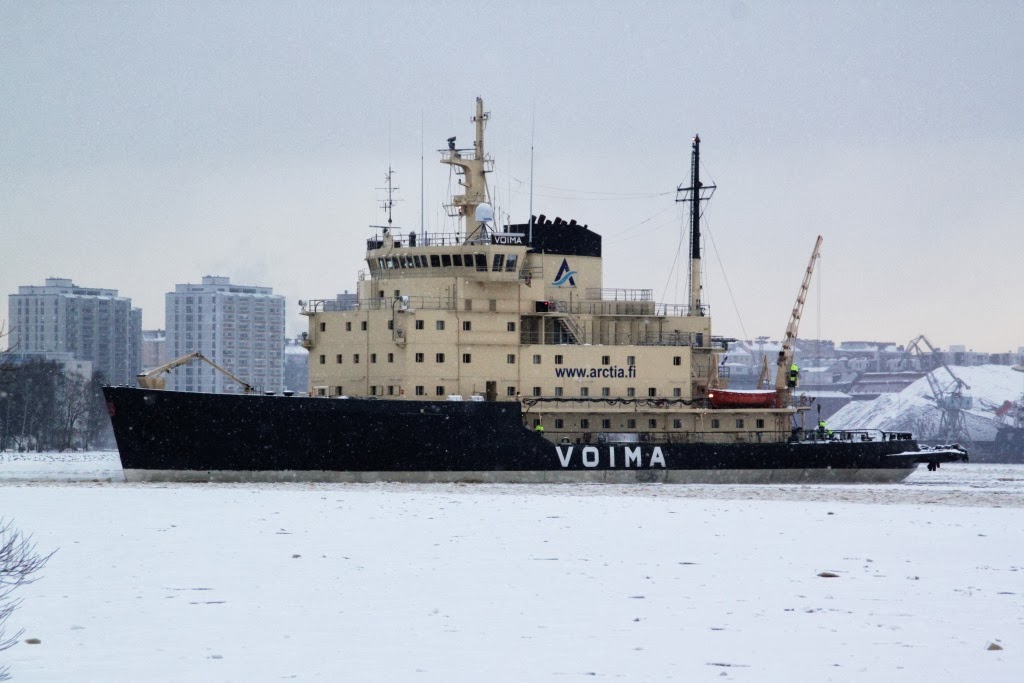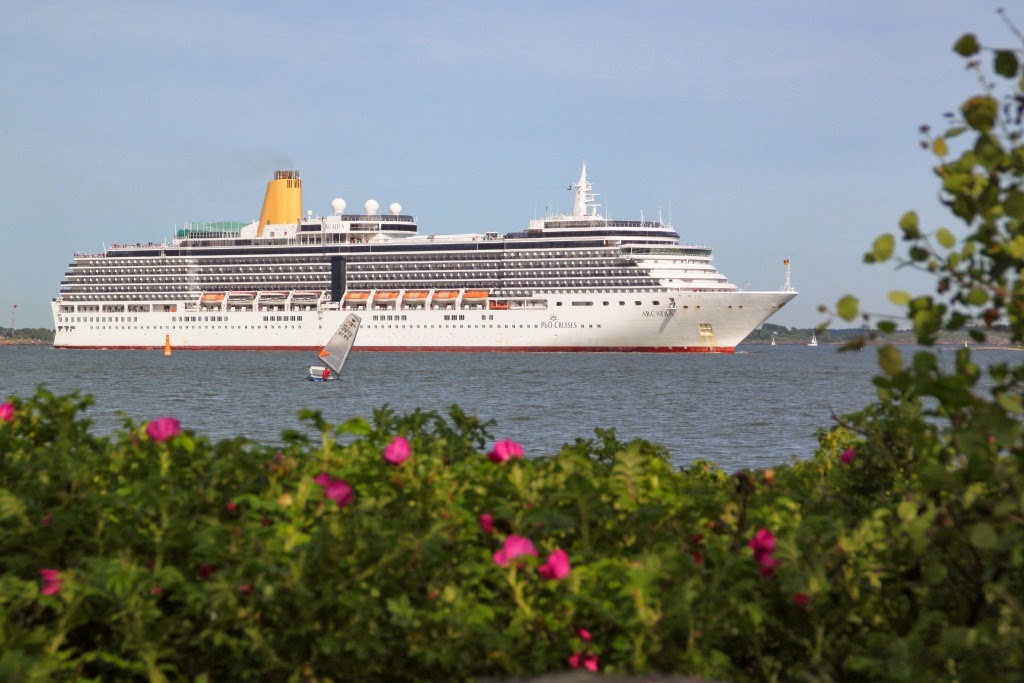Well, I lied. The 60-year-old Finnish icebreaker Voima left Helsinki today to start her icebreaking season for this winter. And since I've made it my mission this winter to get as many icebreaker photos as possible, I was out there to photograph her depature. And while the photos are still fresh, I want to share them with you.
Voima
IMO 5383158
Built 1954, Wärtsilä Helsinki, Finland
Tonnage 4 159 GT
Length 83,50 m
Width 19,40 m
Draugth 7,00 m
21 crew
6 Wärtsilä 16V22 diesels, combined 15 000 kW
2 propellers (aft)
2 propellers (forward)
Speed 18 knots
The Voima ("force" or "power") was completed in 1954 by Wärtsilä's Helsinki shipyard as the first ship in Finland's ambitious plan to rebuilt the country's icebreaker fleet, which had been badly depleted due to World War II, with the most powerful icebreakers (the Jääkarhu and the first Voima) ceded to the Soviet Union as war reparations and the newest icebreaker, the first Sisu, badly damaged by a mine. When completed, the Voima was the most advanced icebreaker of her time; she was not the most poweful, but she was the only one with two propellers both forward and aft, making her the most efficient icebreaker. Such was the success of the Voima that no less than four additional units of the same design were built, three for the Soviet Union and one for Sweden, while the Voima's basic design served as a template for essentially all subsequent icebreakers built by Wärtsilä during the 1950s and 60s.
While successful in terms of design, the Voima's first years in service were marred by difficulties of more human nature. Hitherto almost all Finnish icebreakers had carried civilian crews, but due to the Finnish Seamen's Union's active strike policy for the Voima the decision was made to follow the model in use in Sweden (and most other countries) where icebreakers are crewed by the country's navy. And military personnel, naturally, cannot go on strike. This policy change became a bone of contention between the Finnish National Board of Navigation and the Seamen's Union, with Finnish-flagged ships refusing to accept assistance from the Voima. Eventually the state backed down, and in December 1995 the Voima was crewed by civilians. The following winter was hard and the Voima's icebreaking capacity came to good use, when she assisted a record number of ships during the winter season - including the older icebreakers Sampo and Tarmo.
By the late 70s the Finnish icebreaking fleet was getting old, and the decision was made to extensively modernise the Voima at Wärtsilä's Helsinki yard in 1978-79. What possibly also had an effect in the decision to modernise the ship was the economic downturn experienced at the time, as back then the Finnish State was keen to provide employment during difficult times. In the refit, the Voima's hull plates and engines was changed, and an entirely new superstructure was built, resulting in essentially a new vessel with 60% cost of building a new ship from scratch. After the refit, the Voima's hull was repainted red to improve visibility. In the mid-80s she reverted to a black hull colour.
In 2004 the Voima, like all Finnish icebreakers, was moved from direct state ownership under the ownership of the state-owned Finstaship. In 2010, her ownership transferred to the (also state-owned) Arctia Shipping. As the Voima is the oldest icebreaker in the Finnish fleet (and indeed the oldest active-service icebreaker in the world), plans are in motion to replace her with a newer and larger unit. Previously it has been reported that she would be replaced in 2015, when the new as-of-yet nameless icebreaker ordered from Arctech Helsinki Shipyard earlier this week will be completed, but most recent reports state that the new icebreaker will be utilised to replace the icebreaker chartered by the Finnish state from Sweden. This would mean that the Voima will remain in service, at least as a backup ship, even after 2015.
The photographs below show the Voima departing from the icebreaker base at Helsinki's Katajanokka in the morning of 24 January 2014. Photographed, also, from Katajanokka. Click on the images to see them in larger size.
 |
| Backing away from quay. Notice (how could you not?) the ice. |
 |
| Turning to the shipping lane, with the ESL Shipping bulk carrier Kallio in the background on the right. |
 |
| The Voima (1954/1979) with the Hanasaari B power plant (1954) in the background. |
 |
| A more close-up view, passing in front of the Korkeasaari island zoo. |
 |
| The building in the background here used to house the Finnish Maritime Museum, until a new building was erected for it in Kotka. |
 |
| The Voima's superstructure is, obviously, rather different from the original. You can see the Voima as built for instance here. |
 |
| Disappearing the the snow and the awaiting icy waters of the Gulf of Finland. |







